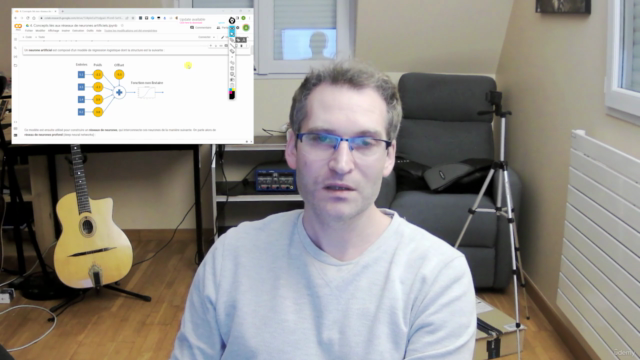Apprentissage par renforcement avec Python - Partie 2

Why take this course?
Ça ressemble à un plan de formation ou d'un cours sur l'apprentissage automatique en apprentissage par renforcement, spécifiquement adapté au traitement de données continues (comme dans les environnements de simulation de physique ou de modélisation). Voici une interprétation et une approche pour aborder ce plan de formation:
Partie 1: Fondamentals of Function Approximation for Continuous Environments
Linéaire Approximation Basics:
- Introduction to the concept of function approximation for continuous state spaces.
- Understanding linear approximations and their limitations.
- Exploring simple examples where these linear models are applicable.
Tools and Techniques:
- Implementing basic linear approximators using polynomial or Fourier bases.
- Introduction to regression techniques, particularly linear regression.
Partie 2: Constructing More Sophisticated Linear Approximations
Advanced Linear Models:
- Using high-dimensional polynomial bases for more complex function approximation.
- Employing Fourier basis functions in multiple dimensions for periodic phenomena.
Techniques and Software Implementation:
- Detailed tutorials on constructing and training these models using Python libraries like NumPy, Scikit-Learn, or TensorFlow.
- Exploring the implications of feature selection and dimensionality reduction.
Partie 3: Approximating Non-linear Functions with Artificial Neural Networks
Artificial Neural Networks:
- Introduction to artificial neural networks, including a brief history and types of network architectures (e.g., feedforward, recurrent).
- Understanding backpropagation and gradient descent optimization techniques.
Practical Application with Python Libraries:
- Hands-on practice using Keras and TensorFlow to build and train artificial neural networks for function approximation.
- Case studies on how these models can be used for non-linear function approximation in continuous state spaces.
Partie 4: Policy Optimization via Linear Approximations
Policy Gradient Algorithms:
- Explanation of policy optimization and the concept of type "on-policy" learning.
- Implementing on-policy algorithms like continual Sarsa and n-step Sarsa using linear function approximators.
Real-world Applications:
- Case studies applying these methods to real-world problems, such as autonomous vehicles or robotics.
- Discussion on the challenges of policy optimization in continuous action spaces.
Partie 5: On-policy Deep Sarsa with Artificial Neural Networks
Deep Reinforcement Learning:
- Introduction to deep versions of Sarsa, such as Deep Sarsa, which leverage experience replay and function approximation by neural networks.
- Understanding the advantages and challenges of combining deep learning with reinforcement learning for on-policy methods.
Implementation and Experimentation:
- Practical exercises using Python libraries to implement Deep Sarsa algorithms.
- Analyzing results, tuning hyperparameters, and exploring the impact of neural network architecture.
Partie 6: Off-policy Learning with Approximations
Off-policy Learning Challenges:
- Discussing the differences between on-policy and off-policy learning, focusing on the stability and convergence issues in off-policy learning.
- Theoretical discussion on the challenges of applying function approximators in off-policy settings (e.g., Monte Carlo methods).
Advanced Off-policy Methods:
- Exploring advanced algorithms like Deep Q-Learning (DQN) that address these challenges through techniques like experience replay, target networks, and double DQN.
Partie 7: Off-policy Learning with Deep Q-Networks
Deep Q-Learning Explained:
- Detailed explanation of the Deep Q-Learning algorithm, its relationship to on-policy methods like Deep Sarsa, and why it's used for off-policy learning.
- Implementing Deep Q-Learning using Python libraries like TensorFlow or PyTorch.
Capstone Project:
- A comprehensive project where participants apply the knowledge gained throughout the course to a real-world problem involving continuous states and actions.
- Sharing results, discussing methodology choices, and comparing performance with different types of function approximators (linear vs. neural networks).
By following this plan, participants can build a strong foundation in both the theoretical aspects and practical implementations of using artificial neural networks for function approximation in reinforcement learning tasks, particularly in continuous environments. This curriculum aims to bridge the gap between theoretical knowledge and real-world applications, providing valuable skills for those interested in AI, machine learning, and robotics.
Course Gallery




Loading charts...